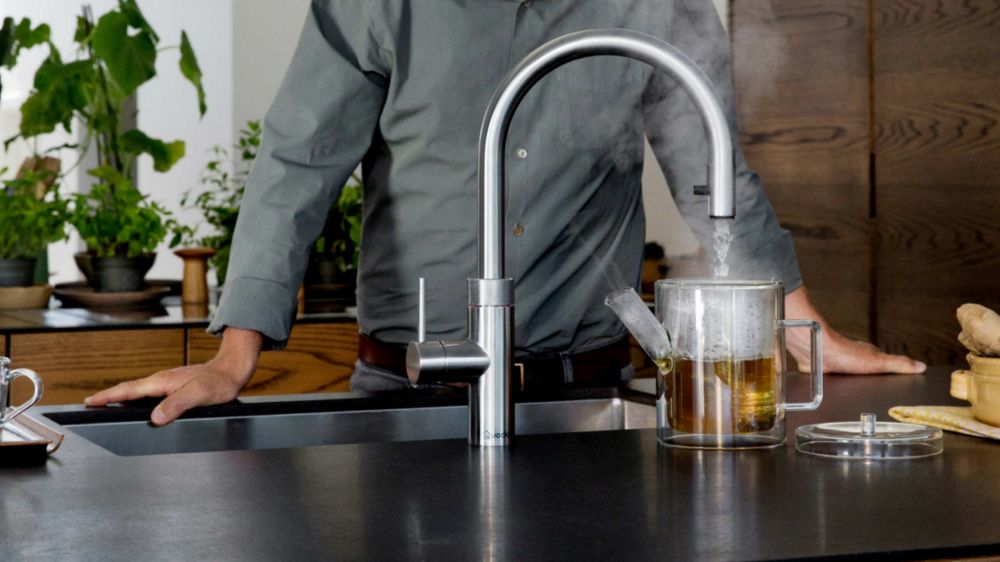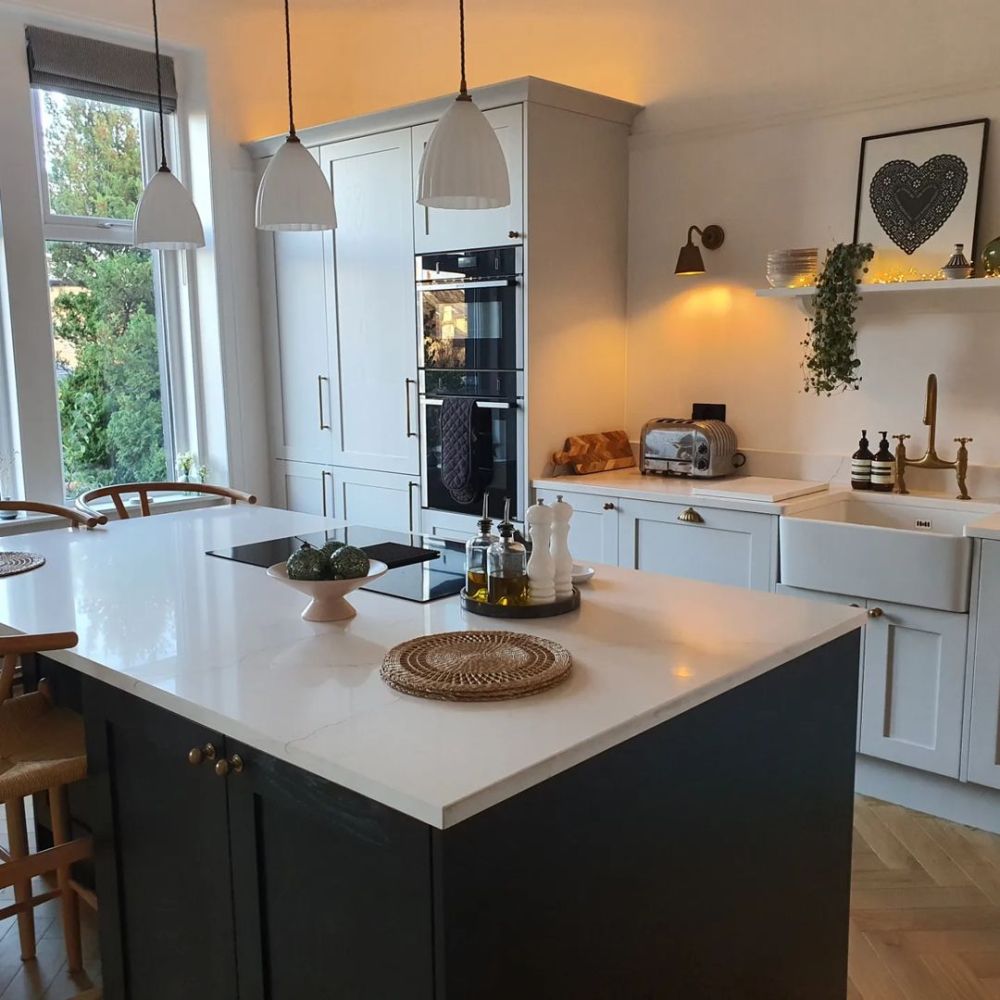This is a question we get asked a lot at Glenlith Interiors. There are so many styles on the market, but the answer is quite simple for kitchen designers.
We need to know how much cooking you do, what type of cooking and what products you use when cooking.
The air extraction is usually hidden behind aluminium mesh looking filters that unclip. These filters are grease filters that help to absorb the fatty oils, that are being pulled upwards by the extractor. The filters can be removed then washed in warm soapy water when cleaning is required.
Please Note! If you are just using aluminium filters then you are only catching the grease from the air, the cooking smells will still be in the room!
Air Recirculation works on all hoods
This is the basic and cheapest method. After installing an extractor, you have the option of ducting outside or fitting disposable carbon filters. The carbon filters lock onto the extraction system when the cooking odours pass through, the carbon holds the odour, then passes clean air back in the kitchen, from the top of the device.
The most common are Chimney hoods. Chimney hoods from manufacturers, such as Rangemaster, AEG and Neff are very popular in many kitchens. The can be all metal, with or without a colour, have glass shield, even a tube like the Neff FTU3807 and some come in 45-degree angles for saving space like the Bosch DWK098E51B. The hood stands proudly above the hob (a minimum of 650mm for electric and 750mm for Gas) and features a tall chimney that usually reaches to the ceiling to disguise the ducting to an exterior exit. This will rid the kitchen area of any source of cooking odours and warm air. Chimney hood varies in width to suit the type of hob you have, this could be 600mm, 750mm or even a 1000mm.
Integrated hoods are still available, but very rarely used. Integrated hoods are the one where you have what looks like a door above the hob, pull the handle and the extraction and lights come on.
Island HoodsKitchen island hoods can be large and quite costly. Neff does some beautiful models, as do Elicia.
Although the hoods can be quite large, the can look stunning when built into a ceiling feature. You can also add LED lighting that will provide an ambient tone when the cooking is finished and your relaxing with that glass of wine.
Although most come with the ducting option, a few of the more elegant models can only use the recirculation system due to design like the Elicia Celestial and Sienna models
A cooker canopy hood is a model we use most. It can be disguised well in a wall unit in a modern style high gloss kitchen, like the Second Nature Remo, or hidden inside a working mantle on an in-frame style kitchen like the Burbidge Langton. It's a simple and convenient way of removing smells and odours from your kitchen using the ducting or recirculation. If the range or AGA is wide, you can use Two. It also provides a great sour5ce of task lighting.
Downdraft extractors work the best on islands. The unit is cut into the Silestone or Granite just behind the hob with a cutout size of around 810mm x 110mm. Most require a depth clearance of around 600/700mm. If this is not being used on an island, only a slim hob can be used. Below work surface, the extraction unit can be reversed, so if it faces in, a built under oven can't be used and you loose most of the storage space under hob area.
Please Note!
If the build or project is going through local building control, this must comply with Part F of building regulations. This is a minimum of 30ltrs per second adjacent or above the hob or 60ltrs per second anywhere else in the kitchen. If not using a ducting system to the exterior through the hood, a 150mm wall fan must be put in place in the area with a 60ltr per second (or more) extraction rate. It is good to know, that a fan of this power would clear a smokey, smelly cooks kitchen in a fraction of the time it would passing through the extractor on the same setup.
For more info visit www.glenlithinteriors.com














